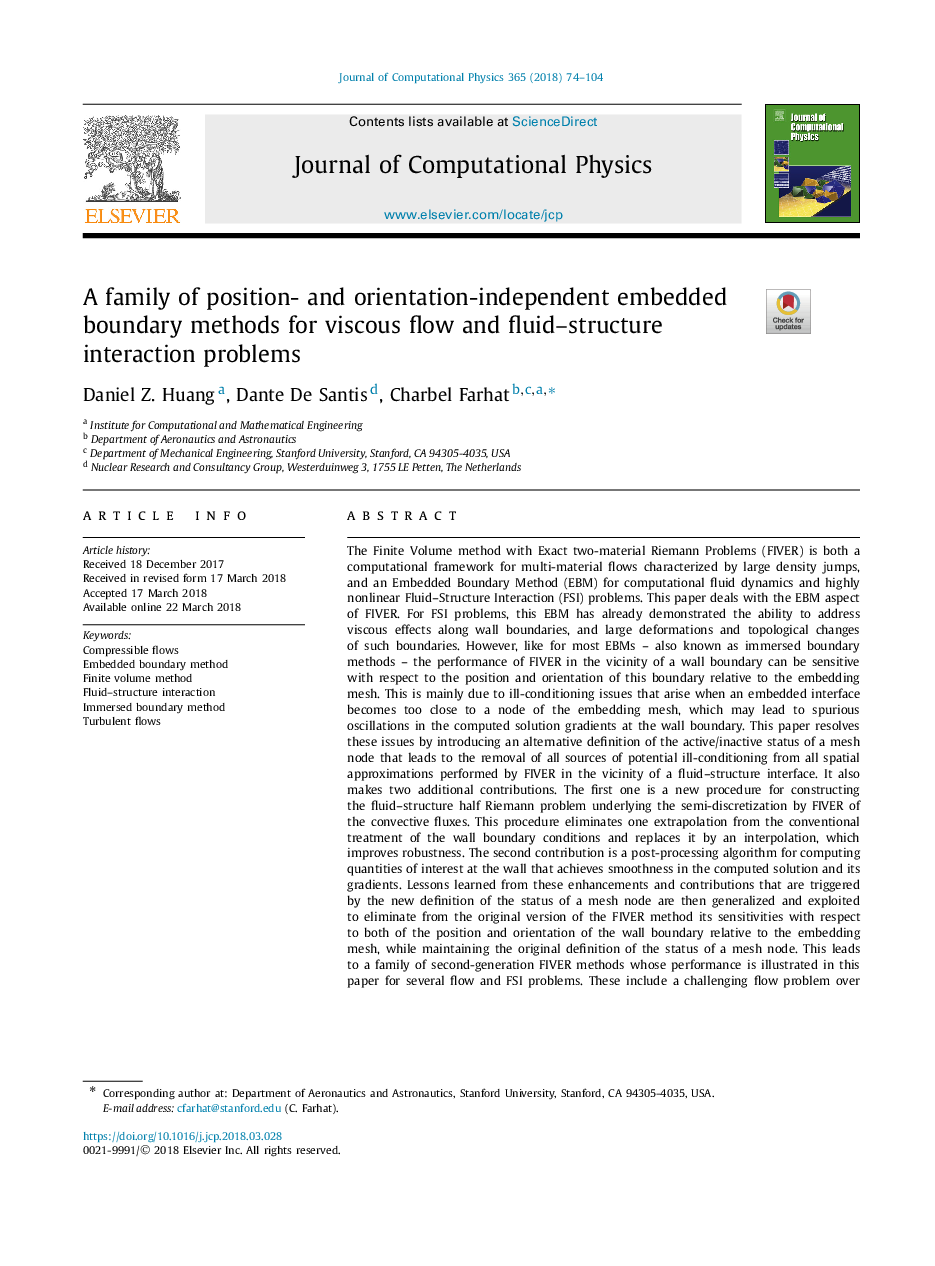| کد مقاله | کد نشریه | سال انتشار | مقاله انگلیسی | نسخه تمام متن |
|---|---|---|---|---|
| 6928884 | 1449348 | 2018 | 31 صفحه PDF | دانلود رایگان |
عنوان انگلیسی مقاله ISI
A family of position- and orientation-independent embedded boundary methods for viscous flow and fluid-structure interaction problems
ترجمه فارسی عنوان
یک خانواده از روش های مرزی تعبیه شده موقعیت و جهت گیری برای مسائل مربوط به جریان چسبندگی و سیال ساختار
دانلود مقاله + سفارش ترجمه
دانلود مقاله ISI انگلیسی
رایگان برای ایرانیان
کلمات کلیدی
موضوعات مرتبط
مهندسی و علوم پایه
مهندسی کامپیوتر
نرم افزارهای علوم کامپیوتر
چکیده انگلیسی
The Finite Volume method with Exact two-material Riemann Problems (FIVER) is both a computational framework for multi-material flows characterized by large density jumps, and an Embedded Boundary Method (EBM) for computational fluid dynamics and highly nonlinear Fluid-Structure Interaction (FSI) problems. This paper deals with the EBM aspect of FIVER. For FSI problems, this EBM has already demonstrated the ability to address viscous effects along wall boundaries, and large deformations and topological changes of such boundaries. However, like for most EBMs - also known as immersed boundary methods - the performance of FIVER in the vicinity of a wall boundary can be sensitive with respect to the position and orientation of this boundary relative to the embedding mesh. This is mainly due to ill-conditioning issues that arise when an embedded interface becomes too close to a node of the embedding mesh, which may lead to spurious oscillations in the computed solution gradients at the wall boundary. This paper resolves these issues by introducing an alternative definition of the active/inactive status of a mesh node that leads to the removal of all sources of potential ill-conditioning from all spatial approximations performed by FIVER in the vicinity of a fluid-structure interface. It also makes two additional contributions. The first one is a new procedure for constructing the fluid-structure half Riemann problem underlying the semi-discretization by FIVER of the convective fluxes. This procedure eliminates one extrapolation from the conventional treatment of the wall boundary conditions and replaces it by an interpolation, which improves robustness. The second contribution is a post-processing algorithm for computing quantities of interest at the wall that achieves smoothness in the computed solution and its gradients. Lessons learned from these enhancements and contributions that are triggered by the new definition of the status of a mesh node are then generalized and exploited to eliminate from the original version of the FIVER method its sensitivities with respect to both of the position and orientation of the wall boundary relative to the embedding mesh, while maintaining the original definition of the status of a mesh node. This leads to a family of second-generation FIVER methods whose performance is illustrated in this paper for several flow and FSI problems. These include a challenging flow problem over a bird wing characterized by a feather-induced surface roughness, and a complex flexible flapping wing problem for which experimental data is available.
ناشر
Database: Elsevier - ScienceDirect (ساینس دایرکت)
Journal: Journal of Computational Physics - Volume 365, 15 July 2018, Pages 74-104
Journal: Journal of Computational Physics - Volume 365, 15 July 2018, Pages 74-104
نویسندگان
Daniel Z. Huang, Dante De Santis, Charbel Farhat,
